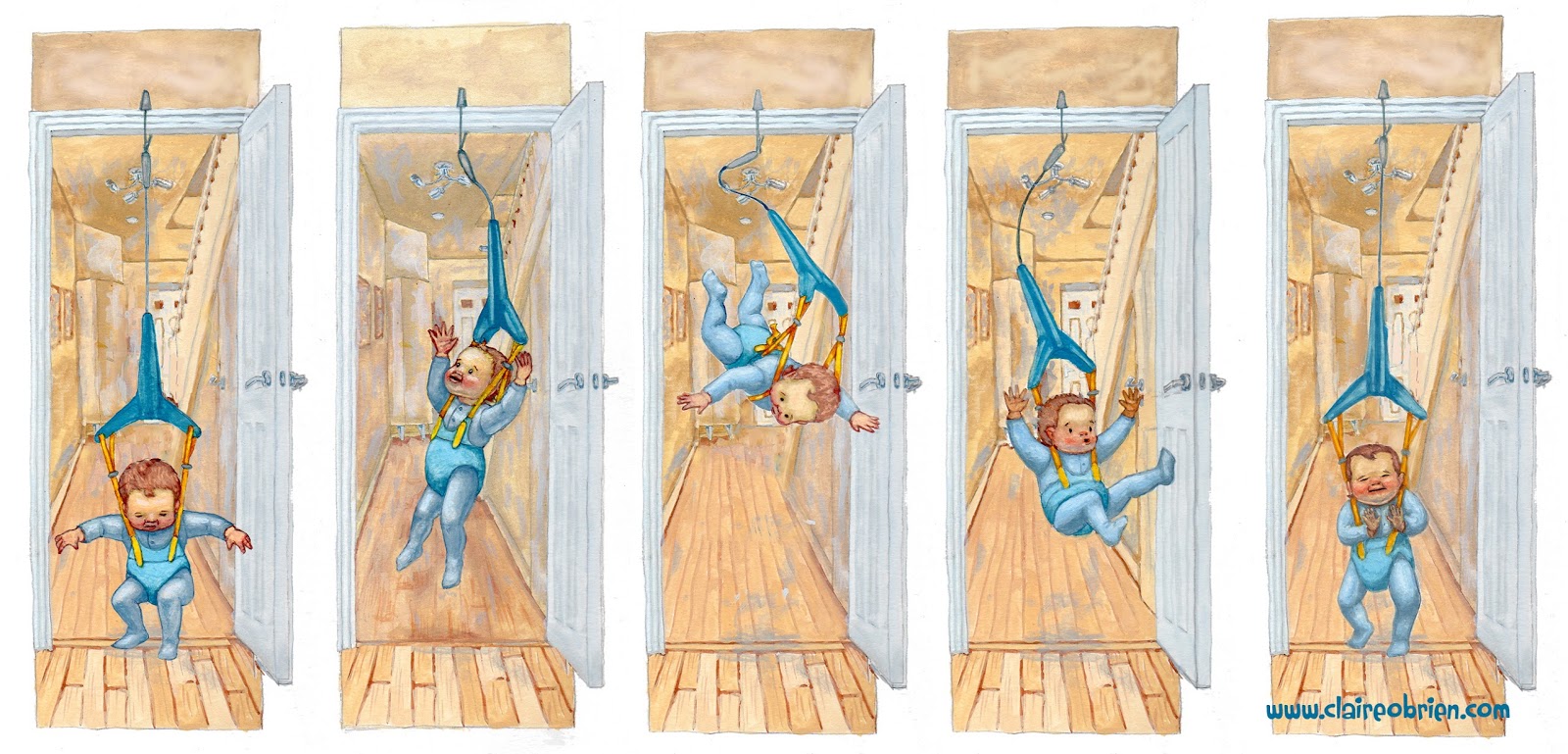In my first post on the subject of Creating A Children’s Picture Book Illustration Portfolio I talked about the quantity and quality of the images. In this post I’d like to explore format and content, by that I mean what the actual images show and how they are presented. I will use my findings to create action points for me to apply to my own portfolio as it presently stands.
The Format of Children’s Picture Book Illustrations
Based on my observation of current children’s picture books, illustrations destined for the printed page are mostly printed in landscape format, spanning double page spreads. In the past we saw more of single spread images and spot images and these are useful if you need more than the allocated 32 pages to tell the story.
The Content of Children’s Picture Book Illustrations
Illustrations in children’s picture books are sequential in that they have multiple images that tell a story that happens over time. This means that there is a requirement to be consistent in their execution, characters have to be ‘on model’, that is they have to have the same proportions and features and wear the same clothes from page to page (unless the story dictates otherwise). Colours have to match from image to image. Locations and props also need to be consistent in the same way. Sequential storytelling art by its nature shows characters doing lots of actions and having different emotions and feelings. And again, unless the story demands it, the art is produced in a consistent same style and medium.
Appraising the Format and Content of the Work in My Own Portfolio
Okay, here is what my portfolio currently looks like, as whole, as seen on my website:
Disregarding its quality, I have a minimum desired quantity of six illustrations, of mainly human subjects, painted traditionally with gouache on paper. I also have a digital piece, an ink and watercolour and a scraperboard.
This is a tonal gouache sketch of a spread from one of my picture books that I am working on. I think it is the strongest piece of work in my portfolio as it is has storytelling and is in a complete setting that conveys mood and atmosphere. This has been affirmed to me by its selection in the 2014 SCBWI (British Isles) Showcase Exhibition a goal that I expressed a wish to achieve back in July when I helped to hang the 2013 Showcase at Seven Stories.
Baby Bouncer is painted in gouache with a touch of digital, set in an interior setting, it hopefully shows consistency in depicting a character and is sequential showing different emotions and action.
When Mum Came Back is a gouache showing a group in exaggerated action, with different emotions.
Outdoor Girl and Sidekick is me trying to capture my gouache style digitally. I like the characters but I'm not sure of their emotions here, they're perhaps a bit neutral.
Jack Frost is painted with ink and watecolour and is me attempting to draw like Arthur Rackham. Things in favour of this illustration are that is set in a forest setting and I like the rendering of the body. The storytelling not quite there and the aesthetic is perhaps more fantasy than picture book.
This Crooked Way is a scraperboard and I like the design style dictated by the medium, but it would need refining if I were to do more of these. Again perhaps the aesthetic is more fantasy than picture book.
Action Points
So here are my conclusions about the format and content of my children's picture book illustration portfolio and some suggested action points to implement in order to improve it, who knows they may apply to your own portfolio:
- Produce future work in landscape format.
- Produce consistent looking sequential images that show characters doing different actions and showing different emotions.
- Include more settings/backgrounds (move away from white backgrounds)
Further Reading
Here are some good links to what others have to say about children's picture book illustration portfolios:
- Lynne Chapman's professional view on character and characterisation
- Donald Wu gives his professional opinion for ordering your portfolio and good advice on style and content.
- Eliza Wheeler shares her SCBWI feedback on improving her portfolio.








No comments:
Post a Comment